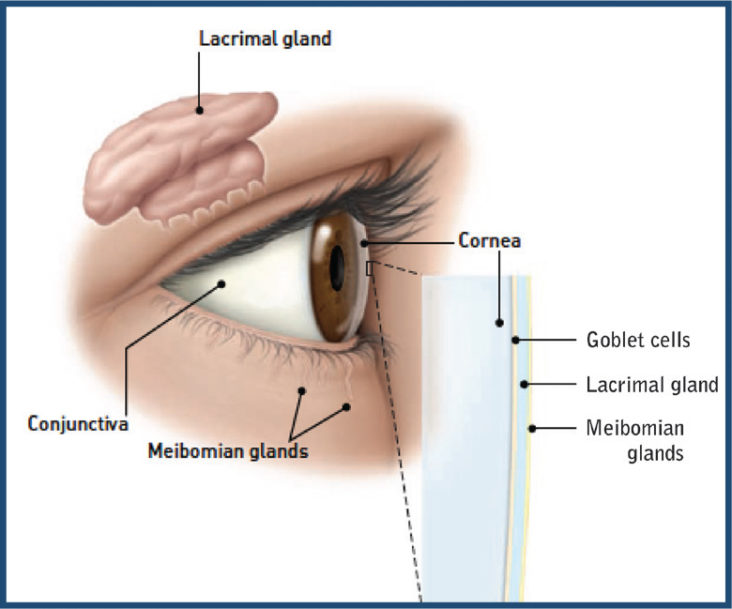The Dry Eye Clinic at Baltimore Eye Physicians was established to manage dry eye patients. Our approach to these patients is to identify the cause(s) and provide a tailored management to each individual patient. Because multiple factors may exist, multiple approaches may need to be utilized; such as:
- Tear Supplementation
- Gels at bedtime for extra lubrication
- Punctal occlusion – Blockage of tear drainage system
- Oral supplements – Fish oils/Omega3 Fatty Acids
- Antibiotics
- Topical Steroid drops
- Restasis
- Repair lid abnormalities
- Intense Pulse Light (IPL)
Conserving your tears
Conserving your eyes own tears is another approach to keeping the eyes moist. Tears drain out of the eye through a small channel into the nose.
A temporary method of closing the channels may involve the use of punctal plugs. Some plugs are dissolvable, some are not, but all are relatively easy to place.
Dry eyes are much more common during the winter. This is because heating systems significantly lower the humidity in the house. This is aggravated by fire places~ or wood burning stoves which further reduce humidity. Humidifying the air or stopping ceiling fans may be required to control dry eye symptoms. With newer innovations in contact lens technology, often times switching a patient from glasses over to contacts can significantly reduce symptoms. There are other advanced therapies that we offer if patients symptoms are still not alleviated.
Adherence to the principles of advanced technology, vision excellence, and high patient satisfaction characterize Baltimore Eye Physicians as one of the regions premier eye-care centers. We offer comprehensive eye care services at our state-of-the-art-practice and on-site surgical center, along with a skilled, caring staff who are committed to our patients.
Part of the unique concept of Baltimore Eye Physicians is our cutting edge, Medicare approved, ambulatory surgical center conveniently adjacent to our practice. Patients appreciate not only the accessibility and convenience of our surgery center to our medical practice, but also the continuity of care they receive from our highly trained and sympathetic staff, whose purpose is to create a caring environment for each and every patient. Our staff is always available for consultation for all your ocular needs.
View Video
 The precorneal tear film is composed of three layers: mucin, aqueous and lipid. The innermost mucin layer is produced by the goblet cells in the conjunctiva and creates a hydrophilic epithelial surface. The aqueous layer provides the bulk of the tear film. Baseline tear production keeps the eye moist and is primarily produced by the accessory lacrimal glands. The main lacrimal gland is more responsible for reflex tearing. The outermost lipid layer of the precorneal tear film is produced by Meibomian glands. They are specialized sebaceous glands within the lid which provide tear film stability.
The precorneal tear film is composed of three layers: mucin, aqueous and lipid. The innermost mucin layer is produced by the goblet cells in the conjunctiva and creates a hydrophilic epithelial surface. The aqueous layer provides the bulk of the tear film. Baseline tear production keeps the eye moist and is primarily produced by the accessory lacrimal glands. The main lacrimal gland is more responsible for reflex tearing. The outermost lipid layer of the precorneal tear film is produced by Meibomian glands. They are specialized sebaceous glands within the lid which provide tear film stability.


